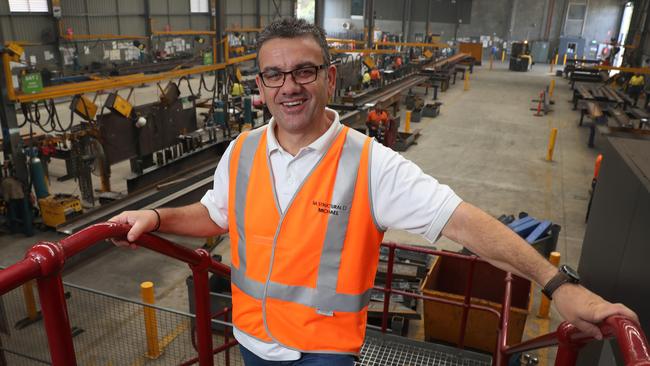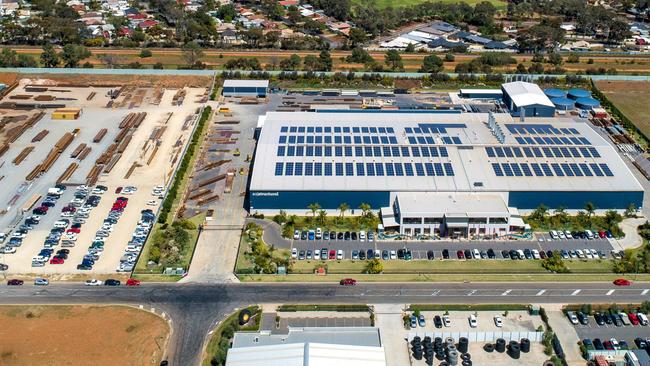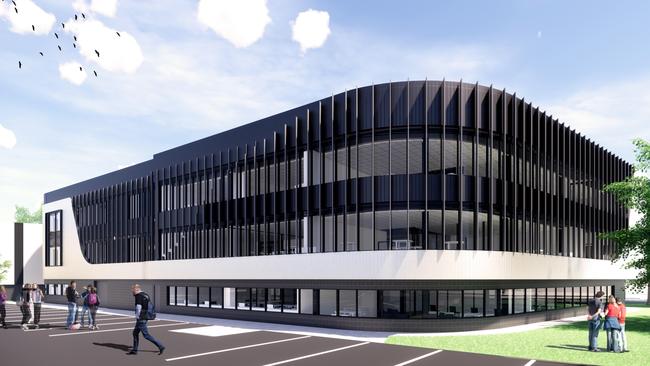SA’s largest steel fabricator has been closed by receivers
SA’s largest steel fabricator has been closed by receivers, leaving 200 workers chasing millions in unpaid super and dashing hopes it would finish major projects.

Business
Don't miss out on the headlines from Business. Followed categories will be added to My News.
ABOUT 200 workers have been left chasing millions of dollars in unpaid entitlements following the closure of the state’s biggest steel fabricator.
Receivers have wound up SA Structural, bringing to an end hopes the firm complete work on a series of construction projects across the state.
Administrator BRI Ferrier had been negotiating with head contractors, including state and federal government bodies, about the possibility of fulfilling steel orders for around 15 projects left incomplete following the company’s collapse last month.
However three days after administrators were appointed, secured creditor NAB engaged receivers and managers Deloitte to take control of the company’s affairs.
NAB is understood to be owed around $12m while close to 200 other creditors, including suppliers, have been left chasing around $3m.

Deloitte receiver and manager Glen Kanevsky said SA Structural had “clearly been struggling for some time” and it was in the interests of the major creditor to permanently shut down operations.
“When we were appointed to the business, the voluntary administrators had already suspended operations and one of our key priorities was to understand exactly what might be required to restart the business,” he said.
“The objective is always to trade through and preserve the business as a going concern wherever possible, but having undertaken an urgent review and input from a range of key stakeholders, we have determined that in this case it was unfortunately not viable to recommence operations.”
The move leaves major projects, including the $715m Gawler train line electrification project and school upgrades, facing delays while government bodies scramble to find alternative suppliers.
Treasurer Rob Lucas confirmed five state government projects would be affected by SA Structural’s collapse, including the upgrades of Glenunga International High School, Playford International College and Modbury Hospital, and phase 2 of the Repat Reactivation project.
“The government is still in the process of assessing any potential impacts, but our current advice is that we expect limited, if any, adverse effect on most projects,” he said.
“For example, I am advised there will be no impact on the Modbury Hospital upgrade, while Playford International College may be delayed by several weeks.”
Meanwhile staff are owed around $3.6m in unpaid superannuation, according to administrator Andre Strazdins from BRI Ferrier, who confirmed super hadn’t been paid for more than 12 months leading up to the company’s collapse.
More than $680,000 in other entitlements are also owed to staff, but are likely to be covered by the Federal Government’s Fair Entitlements Guarantee scheme.
Mr Kanevsky said he was seeking expressions of interest from parties interested in recapitalising the business or buying some or all of the company’s infrastructure assets.
“We have received a number of direct inquiries over the past few days, including interest from competitors looking to expand their own capacity,” he said.
“As part of the process we are also making direct approaches to those we think have an ability to walk in and utilise the available capacity.”

SA Structural was established by Adelaide businessman Michael Mangos in 2003, providing structural steel for mining projects, infrastructure works, shopping centres, schools and hotels.
The company relocated to its 13,000sq m facility in Edinburgh in 2018, but less than two years later sold the property to investor Centuria for $19.5m, as part of a sale and leaseback arrangement.
In November, the facility was caught up in the Parafield COVID-19 cluster in Adelaide’s north, with visitors directed to self-isolate and seek medical testing.
Mr Strazdins said while COVID-19 had affected operations, there were a range of other factors that contributed to the company’s demise.
“Cashflow difficulties, contract difficulties, a lack of financial control, COVID and a lack of working capital were all factors, as well as possibly expanding too quickly from core business,” he said.
“COVID had a general impact, as did the shutdown, but it cannot be solely attributed to the demise of the company. It was a factor that didn’t assist the situation.”
Creditors will meet for the first time on Tuesday at the Adelaide Town Hall.
State Government projects affected by SA Structural collapse
Gawler Rail Electrification Project
Glenunga International High School Upgrade
Playford International College Upgrade
Modbury Hospital Upgrade
Repat Reactivation Phase 2




